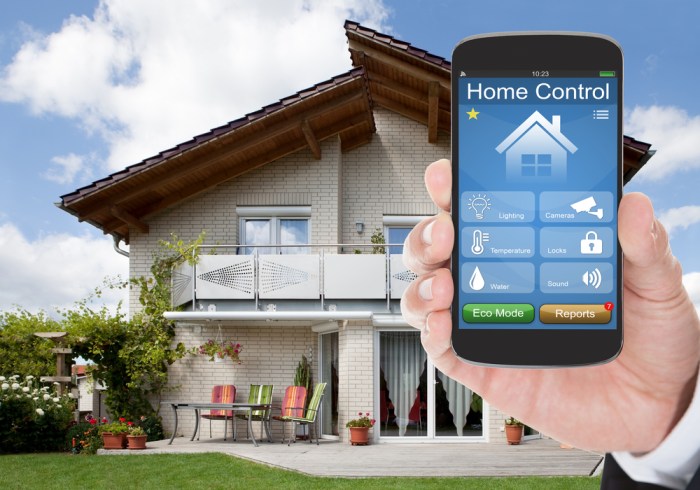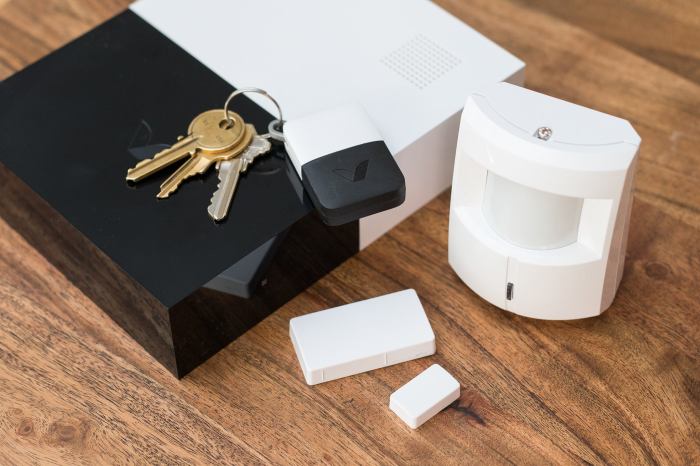Exploring the realm of home automation security systems tailored for global users, this overview delves into the evolution of security technology and its significance in today's interconnected world. From smart cameras to remote access, discover how these systems offer peace of mind and protection for households worldwide.
Providing a detailed look at the types, features, and best options available, this guide aims to equip users with the knowledge needed to make informed decisions when it comes to safeguarding their homes.
Introduction to Home Automation Security Systems

Home automation security systems are advanced technological setups designed to protect homes from potential threats and intrusions. These systems utilize a combination of sensors, cameras, alarms, and smart devices to monitor and secure the premises.
Having a reliable security system is crucial for global users as it provides a sense of safety and peace of mind, whether they are at home or away. With the rise in crime rates and security concerns worldwide, investing in a robust home automation security system is becoming increasingly necessary.
Evolution of Home Automation Systems for Security
Home automation systems have come a long way in integrating security features to offer comprehensive protection. Initially focused on controlling lighting, temperature, and entertainment systems, these systems now include advanced security functionalities such as:
- Video surveillance: High-definition cameras with live streaming capabilities allow users to monitor their homes remotely.
- Smart locks: Keyless entry systems that can be controlled via smartphones or voice commands offer enhanced security.
- Motion sensors: Detect movement and trigger alarms to alert homeowners of potential intruders.
- Remote monitoring: Access security cameras, alarms, and sensors from anywhere in the world using mobile apps or web interfaces.
Types of Home Automation Security Systems
When it comes to home automation security systems, there are various types available globally, each with its unique features and benefits. Let's explore the different options to help you make an informed decision for securing your home.
Wired vs. Wireless Security Systems
Wired security systems are connected through physical wires, providing a reliable and stable connection. On the other hand, wireless security systems use Wi-Fi or cellular networks for connectivity, offering flexibility and easy installation. Here is a comparison of the features of wired and wireless systems:
- Wired Security Systems:
- More reliable connection
- Less susceptible to interference
- Requires professional installation
- Wireless Security Systems:
- Easy to install
- Can be easily expanded or moved
- Potential for signal interference
Smart Security Cameras, Sensors, Alarms, and Monitoring Services
Smart security devices offer advanced features and capabilities to enhance home security. Here are the benefits of incorporating smart security cameras, sensors, alarms, and monitoring services:
- Smart Security Cameras:
- Remote monitoring and access
- Motion detection and alerts
- High-definition video quality
- Sensors:
- Detects motion, doors/windows opening, or glass breakage
- Triggers alarms or notifications
- Enhances overall security system
- Alarms:
- Audible alerts in case of intrusion or emergency
- Deters potential intruders
- Integrates with monitoring services
- Monitoring Services:
- 24/7 surveillance and response
- Dispatch emergency services if needed
- Professional monitoring for peace of mind
Key Features to Consider

When choosing a home automation security system, there are several key features to consider to ensure the effectiveness of the system. These features play a crucial role in enhancing the security of your home and providing you with peace of mind.
Mobile Connectivity and Remote Access
One essential feature to consider is mobile connectivity and remote access. This allows you to monitor and control your security system from anywhere using your smartphone or tablet
Integration with Other Smart Home Devices
Another important feature is integration with other smart home devices. A truly effective home automation security system should be able to communicate and work seamlessly with other smart devices in your home, such as smart locks, lights, and thermostats. This integration not only enhances the overall security of your home but also offers convenience and efficiency in managing all your smart devices from a single platform.
Best Home Automation Security Systems for Global Users
When it comes to home automation security systems, there are several top-rated options available worldwide. These systems offer advanced features to provide users with peace of mind and enhanced security for their homes. Below, we will compare the pricing, installation process, and customer support of leading security system providers while highlighting unique features that set each system apart and appeal to a global audience.
Top-rated Home Automation Security Systems
- 1. ADT Pulse
- 2. Ring Alarm
- 3. Vivint Smart Home
- 4. SimpliSafe
- 5. Nest Secure
Comparison of Pricing, Installation Process, and Customer Support
| Security System | Pricing | Installation Process | Customer Support |
|---|---|---|---|
| ADT Pulse | Varies based on package | Professional installation required | 24/7 customer support |
| Ring Alarm | Affordable pricing | DIY installation | Email and phone support |
| Vivint Smart Home | Higher-end pricing | Professional installation | 24/7 customer support |
| SimpliSafe | Affordable pricing | DIY installation | Phone and chat support |
| Nest Secure | Mid-range pricing | DIY installation | Email and phone support |
Unique Features of Each System
- ADT Pulse:Offers professional monitoring services for added security.
- Ring Alarm:Integrates seamlessly with other Ring products for a comprehensive home security solution.
- Vivint Smart Home:Provides advanced home automation features like smart lighting and thermostat control.
- SimpliSafe:No long-term contracts required, making it a flexible option for users.
- Nest Secure:Works well with other Nest products to create a cohesive smart home ecosystem.
Installation and Setup Guidelines

When it comes to setting up a home automation security system, following the correct installation guidelines is crucial to ensure optimal security for your home. Here are some step-by-step tips and common challenges to consider:
Step-by-Step Installation
- Begin by carefully reading the manufacturer's instructions that come with your home automation security system.
- Identify the best locations for sensors, cameras, and control panels to maximize coverage and effectiveness.
- Install sensors on doors, windows, and other entry points to detect any unauthorized access.
- Mount cameras in strategic locations to capture clear footage of any suspicious activity.
- Connect all components to the control panel according to the manufacturer's recommendations.
- Test the system thoroughly to ensure all sensors, cameras, and alarms are functioning properly.
Tips for Setting Up and Configuring
- Change default passwords and set up unique access codes to prevent unauthorized access to your security system.
- Regularly update the firmware of your security system to protect against vulnerabilities and ensure optimal performance.
- Enable notifications and alerts to stay informed about any security breaches or system malfunctions.
- Integrate your home automation security system with other smart devices for seamless control and monitoring.
- Consider professional installation services if you are unsure about setting up the system on your own.
Common Challenges and Solutions
- Interference with wireless signals: Place sensors and control panels away from sources of interference such as electronics or appliances.
- Difficulty in connecting components: Follow the manufacturer's instructions carefully and seek assistance if needed.
- False alarms: Adjust sensor sensitivity levels and ensure proper placement to minimize false alerts.
- System compatibility issues: Verify compatibility between different devices and components before installation.
- Power source problems: Ensure all components have a stable power source and consider backup options in case of outages.
Last Recap
In conclusion, The Best Home Automation Security Systems cater to the diverse needs of global users, offering a blend of innovation, convenience, and top-notch protection. Whether it's monitoring services or smart alarms, these systems redefine the concept of home security in a technologically advanced era.
Common Queries
How do home automation security systems enhance global users' safety?
Home automation security systems provide advanced features like remote access and real-time monitoring, ensuring users have control and visibility over their homes even when away.
Are wired or wireless security systems more suitable for global users?
Wireless security systems are often preferred by global users due to easy installation and flexibility, whereas wired systems offer more reliability in certain situations.
What sets the top-rated home automation security systems apart?
The best systems stand out with features like AI integration, cloud storage, and seamless connectivity with other smart devices, providing a comprehensive security solution for users worldwide.










